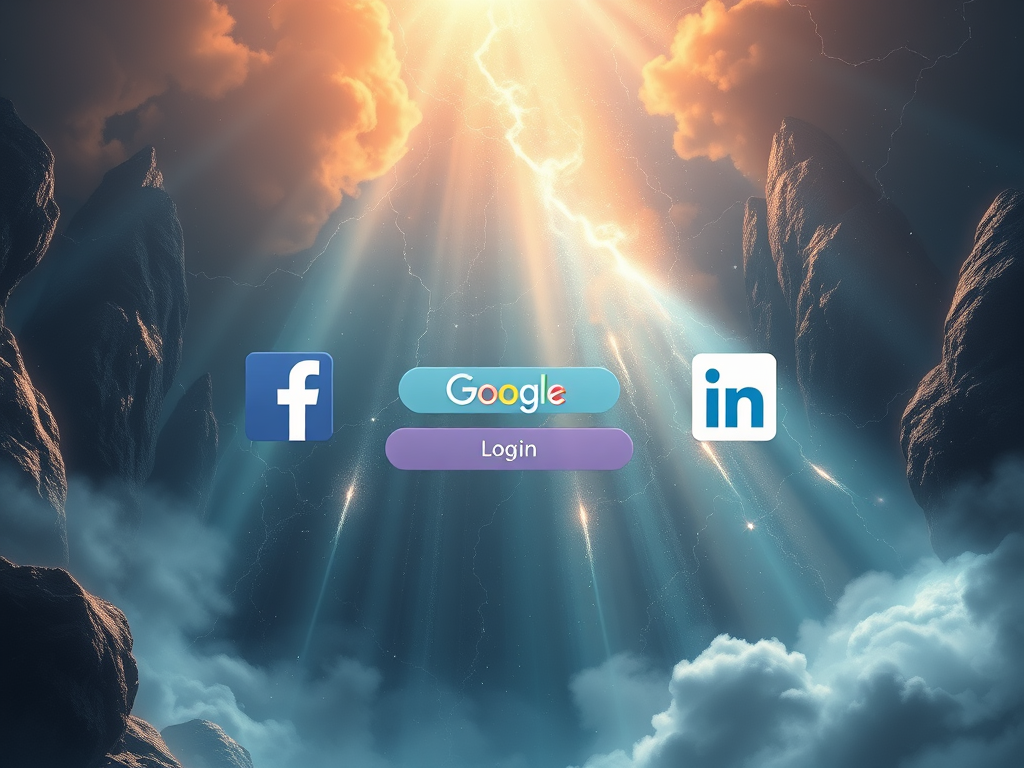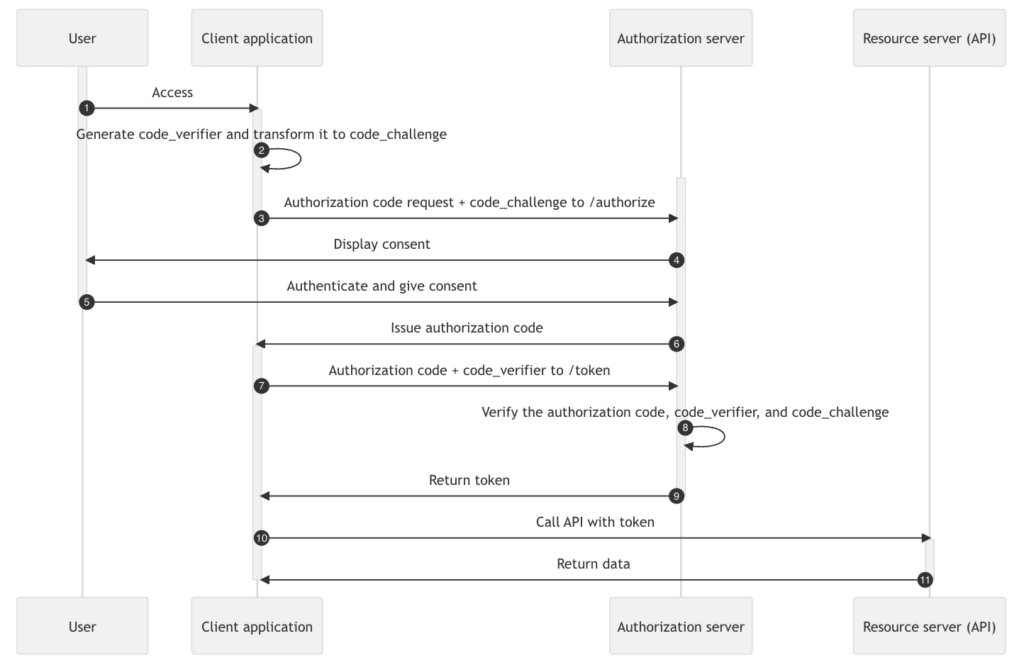As B2C and B2B SaaS application developers move ever-increasingly toward adopting more seamless user experiences, integrating what is typically referred to as Social authentication has gained significant traction and offers significant advantages — particularly if you’re planning to go the open-source DIY route when it comes to CIAM integration.
I’m Peter Fernandez, and in this article, I’m going to be talking about how the Social approach enables users to log in to applications using their existing social media/platform accounts, streamlining the login process and enhancing security.
What is Social Authentication?
Social Authentication — a.k.a. Social, Social Login, Social Signin, etc. — refers to the process of using an existing third-party account to log in to your SaaS application(s) via the use of the OIDC or OAuth 2.0 protocol. It offers a wide array of benefits for both a SaaS vendor and the users of an application, and significant advantages for companies seeking to optimise security, user experience, and operational efficiency as part of their CIAM integration.
Whilst most associate Social with the likes of Facebook, Google, X (Twitter), et al, in reality, “Social” is the term commonly used to refer to any non-Federation Authentication — i.e. any Authentication using OIDC or OAuth 2 (rather than SAML).
Instead of creating a new username and password credential combination, users can authenticate their identity by using credentials from the widely used social networks, such as:
- Microsoft
- GitHub
- Apple
- X
- etc.
With Social, a user provides permission for your SaaS application to access their basic profile information, such as name, email, and profile picture, stored on the social platform, and your SaaS-associated IdP will use the data returned to both authenticate the user and subsequently create the user account.
Though Social authentication can be integrated directly into SaaS and mobile applications through the APIs offered by the various (Social) platforms, for various reasons of security, efficiency and convenience, it’s better to do so via an application-independent IdP implementation.

Improved User Experience
One of the most immediate benefits of Social authentication is the enhanced user experience.
Traditional registration and login processes often require customers to create and remember a username and password, which can be a barrier to engagement. Not only that, but the intricacies associated with password management can be challenging and costly.
By offering users the option to log in with their social accounts, organisations simplify the process, leading to:
- Faster logins: Users don’t need to remember multiple sets of credentials for various services. Social login eliminates the need to create and manage additional passwords.
- Fewer friction points: Social authentication removes barriers to registration, reducing the likelihood of abandoned sign-ups or user frustration.
- Better Personalisation: With social authentication, access to user profile data enables personalised experiences right from the outset.
This streamlined user experience can increase user acquisition rates, reduce abandonment, and improve customer retention.
Enhanced Security
Social authentication can also enhance security. The use of Strong Security Protocols like OIDC and OAuth 2.0 means that the social platforms also implement robust security practices, including two-factor authentication (2FA) and fraud detection. By relying on these services for authentication, businesses inherit the security features of these established platforms, often reducing the risk of account compromise.
Password fatigue is also a common problem in today’s digital landscape. With users managing dozens or even hundreds of passwords across various sites, the temptation to reuse passwords increases, which can lead to security vulnerabilities. The Reduced Password Fatigue provided by Social authentication eliminates the need for users to remember multiple passwords, mitigating the risks associated with poor password hygiene.
CIAM integrations that leverage an application-independent IdP can incorporate Social authentication and, at the same time, enforce additional policies such as multi-factor authentication (MFA) and conditional access based on user risk profiles. This level of Access Control and Privacy is crucial when dealing with sensitive customer data.
Faster Onboarding and Registration
By allowing customers to authenticate via their existing social media accounts, businesses can significantly speed up the onboarding process. Users no longer need to fill out long registration forms with information like name, email address, and profile data as Social login automatically pre-fills much of this.
This reduces friction for users and encourages quicker sign-up completion. A fast registration process improves conversion rates and user satisfaction, which can be vital for gaining a competitive advantage in e-commerce, online services, and mobile apps.
Lower Operational Costs
Integrating Social authentication can also help reduce operational costs. Users are less likely to forget their credentials when using social login because they are relying on a service they use frequently. This reduces the burden on customer support teams who would otherwise have to manage password resets or account recovery processes.
Social authentication also simplifies the process of managing user accounts, as businesses can rely on third-party platforms to handle the security aspects of authentication. This reduces the administrative overhead associated with maintaining user credentials and ensuring compliance with regulations like GDPR.
In addition, offloading the handling of passwords can enable you to deploy using a DIY open-source CIAM, providing a means of effectively lowering costs by (a) mitigating the need to subscribe to an expensive 3rd party CIAM SaaS vendor solution and (b) ensuring that the cost factor of hosting your own DIY implementation is kept to a minimum. With the likes of brute-force attack, breached password processing, and other password attack vectors (see below) being mitigated upstream — and typically free of charge — you no longer have to invest time, effort, energy or money in a solution
Access to Richer Customer Data
When users log in via social platforms like Google or LinkedIn, SaaS application vendors can access rich user profile data that can be used to enhance customer interactions. This data typically includes:
- Name and email address
- Profile pictures
- Location and social activity (e.g., LinkedIn job titles)
- Friend or connection data (if permitted)
This valuable information helps businesses create personalised experiences, offer targeted content, and improve marketing efforts. It also aids in customer segmentation and provides insights into user behaviour, which can drive better decision-making.
Improved Scalability and Flexibility
Social authentication platforms, such as Facebook, Google, and LinkedIn, are already designed to handle a massive volume of users, making them reliable and scalable solutions for handling authentication. By incorporating Social as part of your CIAM integration, supporting a larger number of user accounts and different authentication protocols becomes easier to achieve.
Additionally, CIAM systems that support multiple social login providers offer flexibility; if a customer decides to log in with Google but not Facebook, they can choose. Additionally, leveraging SSO to create a single user account means that the user experience remains consistent no matter which social platform they choose.




























Leave a Reply